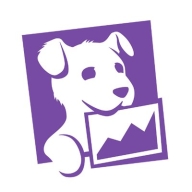

Datadog and Uptycs both operate in the monitoring and analytics sector. Datadog appears to have an upper hand in infrastructure monitoring, whereas Uptycs is favored for its comprehensive security features, catering to those with significant security requirements.
Features: Datadog is recognized for robust infrastructure monitoring, application performance monitoring, and log management. Uptycs highlights include security analytics, compliance features, and specialized threat detection, tailored for organizations with a strong emphasis on security.
Ease of Deployment and Customer Service: Datadog ensures easy deployment with various integrations streamlined for diverse environments, alongside providing strong support. Uptycs focuses on secure deployment and security integration, with a similar commitment to customer service excellence.
Pricing and ROI: Datadog offers competitive pricing with a pay-as-you-go model that is beneficial for infrastructure monitoring ROI. Uptycs may incur higher costs but delivers substantial ROI through its security analytics, valuable for security-focused organizations.

Datadog is a comprehensive cloud monitoring platform designed to track performance, availability, and log aggregation for cloud resources like AWS, ECS, and Kubernetes. It offers robust tools for creating dashboards, observing user behavior, alerting, telemetry, security monitoring, and synthetic testing.
Datadog supports full observability across cloud providers and environments, enabling troubleshooting, error detection, and performance analysis to maintain system reliability. It offers detailed visualization of servers, integrates seamlessly with cloud providers like AWS, and provides powerful out-of-the-box dashboards and log analytics. Despite its strengths, users often note the need for better integration with other solutions and improved application-level insights. Common challenges include a complex pricing model, setup difficulties, and navigation issues. Users frequently mention the need for clearer documentation, faster loading times, enhanced error traceability, and better log management.
What are the key features of Datadog?
What benefits and ROI should users look for in reviews?
Datadog is implemented across different industries, from tech companies monitoring cloud applications to finance sectors ensuring transactional systems' performance. E-commerce platforms use Datadog to track and visualize user behavior and system health, while healthcare organizations utilize it for maintaining secure, compliant environments. Every implementation assists teams in customizing monitoring solutions specific to their industry's requirements.
Uptycs provides robust security monitoring and threat detection, ensuring comprehensive endpoint security, compliance monitoring, and cloud infrastructure protection. It offers real-time alerts and streamlined deployment across IT environments, enhancing security operations and incident response.
Uptycs is an effective tool for threat detection and security monitoring, valued for its real-time monitoring capabilities and seamless deployment. It integrates well with cloud environments, offers detailed reporting, and has a customizable alert system. Users appreciate its scalability, ease of use, and quick response times. However, enhancements in data visualization, better integration with other security tools, and improvements in documentation and customer support could further elevate its value.
What are the key features of Uptycs?
What benefits and ROI should you consider?
Uptycs is particularly beneficial in industries needing robust security measures, such as finance, healthcare, and e-commerce. It provides these industries with enhanced visibility into their assets and streamlined compliance and security operations, ensuring protection against evolving threats.
We monitor all Cloud Security Posture Management (CSPM) reviews to prevent fraudulent reviews and keep review quality high. We do not post reviews by company employees or direct competitors. We validate each review for authenticity via cross-reference with LinkedIn, and personal follow-up with the reviewer when necessary.